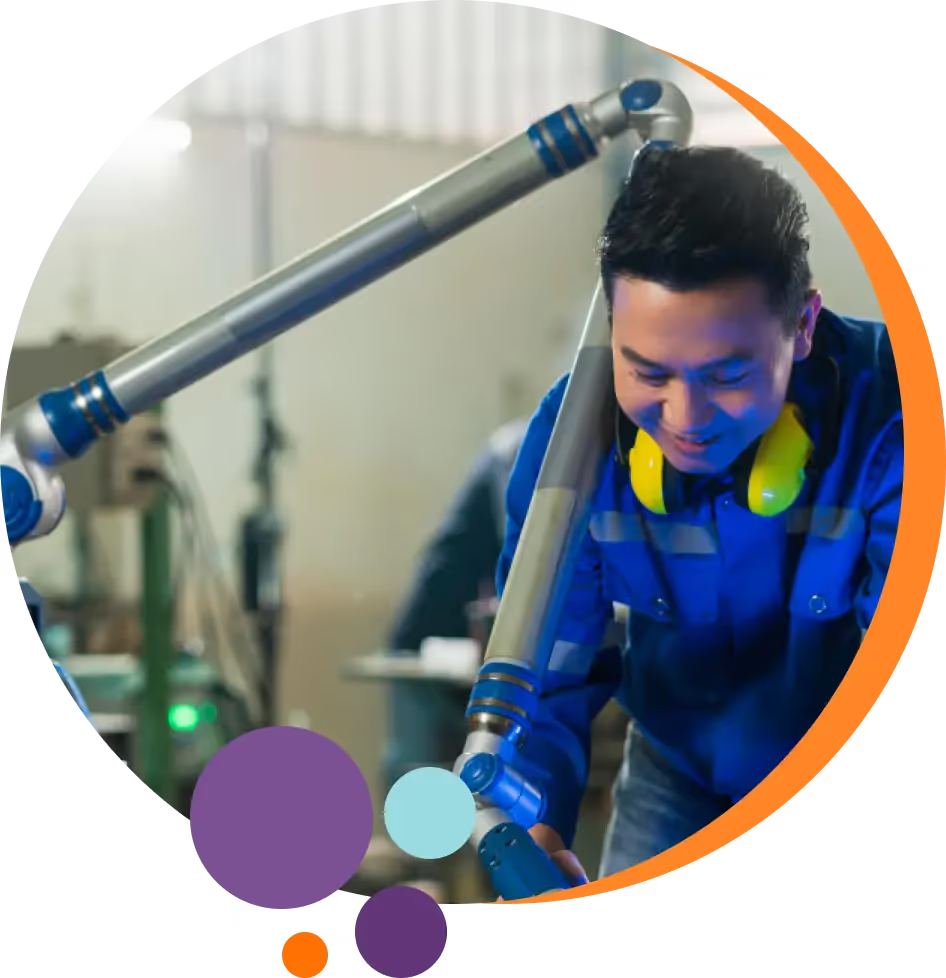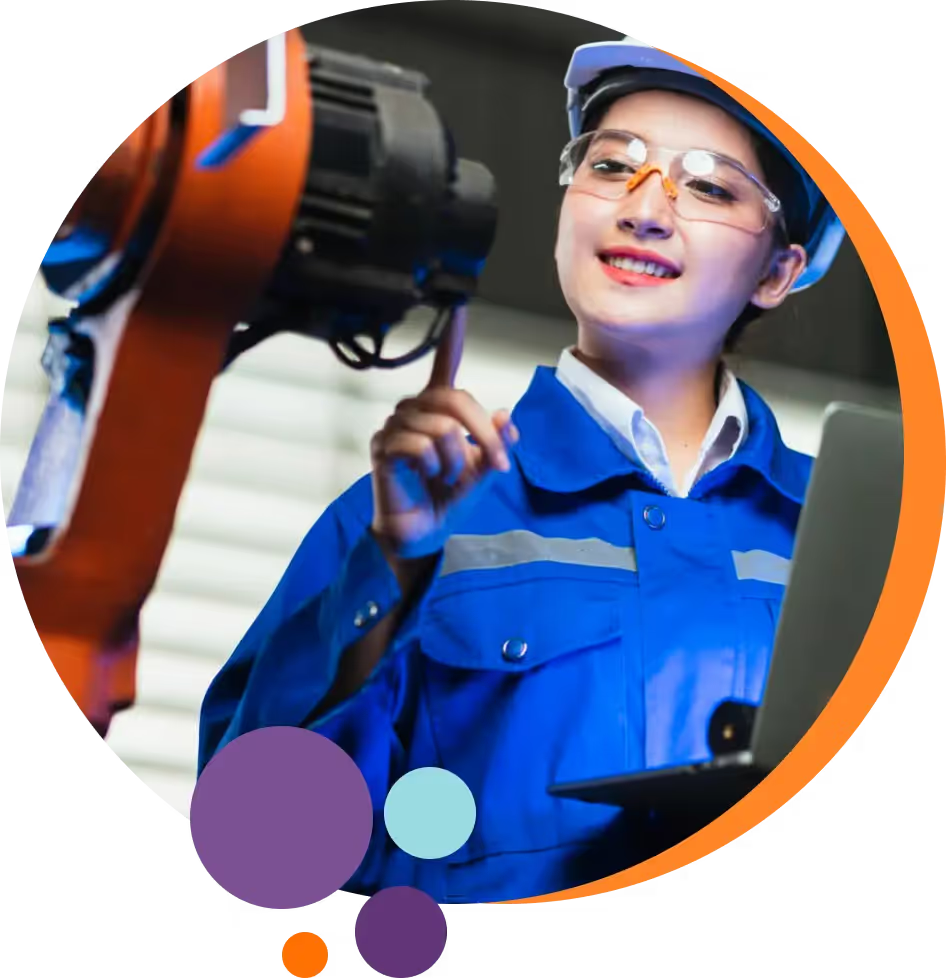Basics of Mechatronics
Mechatronics can be defined as the integrated design of a product or system in which multiple disciplines converge. It's about making machines work more efficiently and optimizing them to function more intelligently and autonomously. Here’s what it involves:
- Mechanical Engineering: This encompasses the physical aspects, including kinematics (motion) and dynamics (forces and torques). In mechatronics, this would translate to the structure and movements of a robot arm or the design of an automated conveyor system.
- Electrical Engineering: This deals with the control systems and feedback loops. Think of the sensors that detect a product's position on an assembly line or the motor's controllers.
- Computer Science: The brain of mechatronic systems. This component ensures machines think and learn from primary programmable logic controllers (PLCs) to advanced machine learning algorithms.
- Control Engineering: Control engineering ensures stability, responsiveness, and accuracy. For example, if a sensor detects a robot's arm is out of position, control systems adjust its movement to rectify the error.
The Synergy of Mechatronics
The integration of disciplines that Mechatronics entails is nothing short of science fiction. It paves the way for advanced solutions like automated high-precision manufacturing, adaptive process control, and self-diagnosis and correction in machinery.
This synergy leads to innovations pushing the boundaries of what's possible in manufacturing, giving industries the tools to produce faster, more intelligent, and impeccable precision.
Mechatronics is a testament to human ingenuity, proving that when we merge diverse fields, we can create solutions that transcend the capabilities of each individual discipline. As the manufacturing world continues to evolve, it's clear that mechatronics will be at its helm, guiding it toward a future of unparalleled efficiency and innovation.
According to Recruiter, mechatronics engineers in the US earn an average salary of $120,150.
.webp)
Role of Mechatronics in Modern Manufacturing
Mechatronics allows for seamless automation across various processes. It's all about replacing manual tasks and enhancing them. For instance, automated quality control systems powered by mechatronics can inspect products at speeds and accuracy levels humans cannot achieve, ensuring consistent product quality and reducing wastage.
The precision of modern manufacturing processes is nothing short of awe-inspiring. The micro-sized components in your smartphone or the perfectly balanced rotor in your car's engine owe their existence to the accuracy mechatronics brings. Mechatronic systems have a feedback loop mechanism: They can correct their actions by comparing the results with the intended outcome.
Today's consumers demand customization. From personalized car features to custom-engraved gadgets, the manufacturing world must be agile to meet customer expectations. Mechatronics, with its integrated systems, provides this much-needed flexibility. Machines can quickly switch between tasks, adapt to new production specifications, or handle varied materials.
Safety is paramount in any industrial setting. Mechatronic systems are equipped with advanced sensors to detect human presence or anomalies in real-time. This helps prevent accidents and minimizes machine downtime. Energy consumption is also reduced with the efficiency mechatronics brings.
Real-world Applications
Robots have revolutionized assembly lines. Automobile giants employ thousands of robots for tasks ranging from welding to painting, ensuring consistent quality and significantly speeding up production.
Computer numerical control (CNC) machines are guided by computerized designs and can carve, mold, or shape materials with impeccable precision. Industries from aerospace to jewelry rely on CNC's mechatronic prowess for creating complex and intricate designs.
Modern factories employ sensors to inspect every product, whether it’s checking beverage bottle seals or smartphone screen alignment. If an anomaly is detected, actuators act to rectify the error or remove the defective product.
Imagine a factory where machines 'talk' to each other, share data, and make intelligent decisions. That’s the reality of smart factories. Powered by mechatronics and the Internet of Things (IoT), these factories achieve optimized production, predict maintenance needs, and even adapt to external factors like market demand or supply chain disruptions.
Mechatronics in Action: Tesla's Manufacturing Evolution
Mechatronics has etched its mark from global giants to local enterprises, offering tangible benefits that enhance efficiency, sustainability, and profitability.
One of the most illustrative examples of the power of mechatronics in manufacturing is seen in the evolution of Tesla's assembly line. As a front-runner in electric vehicle production, Tesla recognized the need for enhanced precision and efficiency in their manufacturing processes early on.
The company reduced production times and human error by transitioning to a mechatronics-driven assembly line. Advanced robots integrated with real-time monitoring systems ensure each vehicle component is assembled accurately. This tech-driven approach increased Tesla's production capacity and solidified its reputation for quality and innovation.
Mechatronics and the Global Economy
Mechatronics influences production lines and product quality. It also has profound effects on the global economy. As businesses adopt these advanced technologies, they often witness increased efficiency, reduced production costs, and the potential for product diversification - all of which stimulate economic growth. As nations equip their workforce with skills in mechatronics, they position themselves competitively on the global stage, ready to attract foreign investments and foster innovation.
This economic impact isn't confined to the industrial sector alone. Its ripple effects can be seen in secondary and tertiary sectors as advancements in mechatronics drive innovation across multiple domains - from services and education to tourism. Decision-makers and business leaders can better strategize their investments and policies by understanding the economic potential of mechatronics and ensuring long-term growth and sustainability.
Advanced Manufacturing: Innovations and Trends
While quite revolutionary on its own, Mechatronics scales new heights when integrated with artificial intelligence (AI) and machine learning (ML). Manufacturing can move from merely automated to genuinely intelligent by feeding machines data from past operations and allowing them to learn.
Unscheduled downtimes are a bane of the manufacturing industry. With predictive maintenance powered by mechatronics, it can become a thing of the past. Advanced sensors can detect wear and tear, slight deviations, or any impending failures in machinery to prevent downtime.
The call for sustainable and green manufacturing has never been louder. Mechatronics answers this call by optimizing processes to reduce waste, consume less energy, and use materials more efficiently. For instance, smart motors equipped with mechatronic systems can adjust their operations to consume minimal necessary power and significantly reduce energy consumption.
While the future of mechatronics looks promising, it does come with challenges. As machines become more intelligent and autonomous, issues of cybersecurity come to the fore. Protecting smart factories from potential cyber-attacks becomes paramount.
The initial investment required for mechatronic integration, however, can be significant. Small and medium-sized enterprises (SMEs) might need financial support or incentives to adopt these technologies.
.webp)


.webp)


















.webp)


